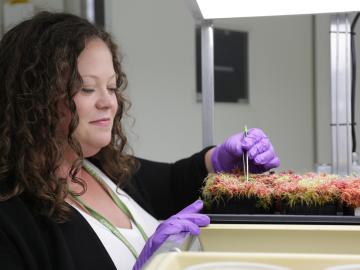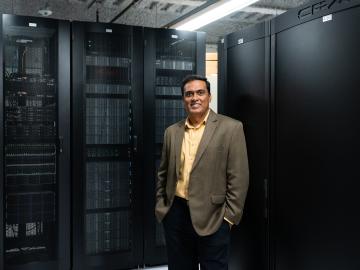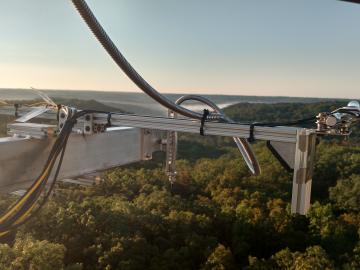
Filter News
Area of Research
- (-) Biology and Environment (65)
- (-) Fusion and Fission (34)
- Advanced Manufacturing (5)
- Biology and Soft Matter (1)
- Computational Biology (1)
- Computational Engineering (2)
- Computer Science (10)
- Electricity and Smart Grid (3)
- Energy Frontier Research Centers (1)
- Energy Science (138)
- Energy Sciences (1)
- Fuel Cycle Science and Technology (1)
- Functional Materials for Energy (2)
- Fusion Energy (12)
- Isotope Development and Production (1)
- Isotopes (5)
- Materials (134)
- Materials for Computing (15)
- Mathematics (1)
- National Security (34)
- Neutron Science (128)
- Nuclear Science and Technology (40)
- Nuclear Systems Modeling, Simulation and Validation (2)
- Quantum information Science (2)
- Sensors and Controls (1)
- Supercomputing (96)
News Topics
- (-) Advanced Reactors (7)
- (-) Artificial Intelligence (10)
- (-) Big Data (10)
- (-) Energy Storage (10)
- (-) Grid (5)
- (-) Nanotechnology (8)
- (-) Neutron Science (4)
- (-) Nuclear Energy (27)
- (-) Physics (3)
- 3-D Printing/Advanced Manufacturing (13)
- Bioenergy (47)
- Biology (74)
- Biomedical (17)
- Biotechnology (14)
- Buildings (3)
- Chemical Sciences (16)
- Clean Water (11)
- Composites (6)
- Computer Science (20)
- Coronavirus (13)
- Critical Materials (2)
- Cybersecurity (1)
- Education (1)
- Environment (92)
- Exascale Computing (5)
- Fossil Energy (1)
- Frontier (4)
- Fusion (22)
- High-Performance Computing (21)
- Hydropower (8)
- Isotopes (3)
- ITER (6)
- Machine Learning (9)
- Materials (12)
- Materials Science (9)
- Mathematics (4)
- Mercury (7)
- Microscopy (11)
- Molten Salt (1)
- National Security (3)
- Partnerships (9)
- Polymers (2)
- Security (3)
- Simulation (18)
- Space Exploration (1)
- Summit (10)
- Transportation (5)
Media Contacts

Science has taken Melanie Mayes from Tennessee to the tropics, studying some of the most important ecosystems in the world.

Steven Arndt, distinguished R&D staff member in the Nuclear Energy and Fuel Cycle Division at ORNL, began a one-year term on June 16 as the 68th President of the American Nuclear Society.

As the United States moves toward more sustainable and renewable sources of energy, hydropower is expected to play a pivotal role in integrating more intermittent renewables like wind and solar to the electricity grid

Microorganisms may provide hope that peatlands can withstand hotter temperatures in a changing climate.

The Atmospheric Radiation Measurement Data Center is shepherding changes to its operations to make the treasure trove of data more easily available accessible and useful to scientists studying Earth’s climate.

Scientists develop environmental justice lens to identify neighborhoods vulnerable to climate change
A new capability to identify urban neighborhoods, down to the block and building level, that are most vulnerable to climate change could help ensure that mitigation and resilience programs reach the people who need them the most.

Technology developed at ORNL to monitor plant productivity and health at wide scales has been licensed to Logan, Utah-based instrumentation firm Campbell Scientific Inc.

Friederike (Rike) Bostelmann, who began her career in Germany, chose to come to ORNL to become part of the Lab’s efforts to shape the future of nuclear energy.

ORNL scientists will present new technologies available for licensing during the annual Technology Innovation Showcase. The event is 9 a.m. to 3 p.m. Thursday, June 16, at the Manufacturing Demonstration Facility at ORNL’s Hardin Valley campus.

To achieve practical energy from fusion, extreme heat from the fusion system “blanket” component must be extracted safely and efficiently. ORNL fusion experts are exploring how tiny 3D-printed obstacles placed inside the narrow pipes of a custom-made cooling system could be a solution for removing heat from the blanket.


